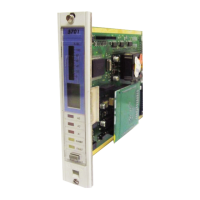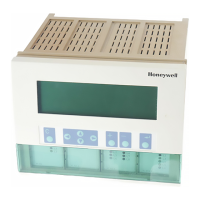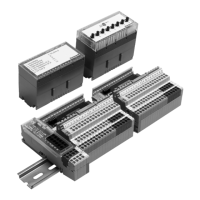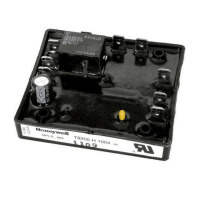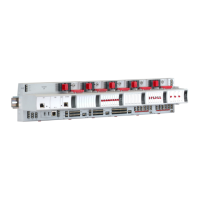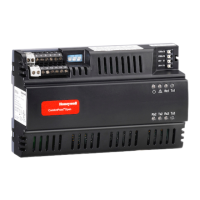4. CABLING
TheeldterminalsontheQuadRelayInterfaceandRelayInterface
Assemblyacceptsingleormulti-strandedwireupto2.5mm˝(14AWG).
Cables should be routed carefully to avoid physical and environmental
hazardssuchasmechanicalstressandhightemperatures.
Sensor wiring should consist of a cable with an earthed outer shield
and should be routed away from sources of interference such as ac
powercables,motors,machineryetc.Allsensorcablingissubjecttoa
maximum cable length that is dependant upon the cable line resistance
and sensor types.
The current ratings of the power and relay cables should always be
higher than the worst case maximum load requirement.
All sensor eld cables must be screened in order to ensure correct
operation of the system and to meet European Standards for RFI and
EMC. The cable screen of each sensor should be connected to a
GROUND terminal at the cabinet entry or the ground terminal of the
appropriate Quad Relay Interface Card or another suitable ground
point.
5. POWER REQUIREMENTS
The System 57 operates from a nominal 24V (18V to 32V) dc power
supply input which may be derived from various sources including the
mains ac, via a separate ac to dc power supply unit, local plant dc
supply and/or battery backup dc supply.
The power supply may be applied to the System 57 backplane, via the
DC Input Card, where the maximum backplane current is limited to 8A.
TheDCInputCardterminalblocksallowexiblepowerconnections
and diode isolation for two separate power supply inputs.
WherethenumberofFourChannelControlCardsttedandthetype
of sensors used would cause a backplane current in excess of the
8A maximum, it is necessary to connect the power supply to each
individual control card via its Quad Relay Interface Card. As a general
rule, individually powered cards are required where more than eight
catalyticcontrolcardsaretted.
See Section 17 for connection details.
The power supply rating required is dependent upon the sensor types,
numberofchannelsandcongurationoftheSystem57.Table1,the
Power Budget Calculation Sheet, allows for a quick and easy calculation
of the worst case power requirement for the system. In many cases a
lower power rating can be used, however, a more detailed power budget
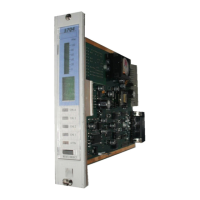
